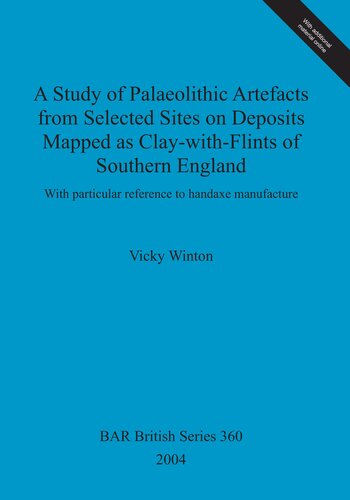

Most ebook files are in PDF format, so you can easily read them using various software such as Foxit Reader or directly on the Google Chrome browser.
Some ebook files are released by publishers in other formats such as .awz, .mobi, .epub, .fb2, etc. You may need to install specific software to read these formats on mobile/PC, such as Calibre.
Please read the tutorial at this link: https://ebookbell.com/faq
We offer FREE conversion to the popular formats you request; however, this may take some time. Therefore, right after payment, please email us, and we will try to provide the service as quickly as possible.
For some exceptional file formats or broken links (if any), please refrain from opening any disputes. Instead, email us first, and we will try to assist within a maximum of 6 hours.
EbookBell Team

5.0
30 reviewsRecent research suggests that the earliest human occupation of the British Isles stretches back to before 500,000 years ago, whilst anatomically modern humans do not appear to have arrived in Europe before approximately 50-40,000 years ago. During the intervening period, of perhaps half a million years, referred to as the Lower and Middle Palaeolithic, archaic species of human were at least sporadically present in southern England. Few actual hominid fossils have survived, but there are plenty of other enduring traces of human presence.This book presents the results of an investigation of stone artefacts from southern England, which date to the Lower and Middle Palaeolithic, with particular reference to assemblages from 2 sites at high levels in the landscape. This book aims to show that aspects of cultural adaptation in European archaic humans can be investigated using the evidence of Lower and Middle Palaeolithic stone artefacts.In addition, the book is devoted to the specific question of how best to understand Palaeolithic artefacts preserved within deposits mapped as Clay-with-flints. The contents of the volume includes a review of approaches to the study of stone artefacts produced as a result of handaxe-making, and then presents a study of an experimentally produced handaxe and associated waste products from its manufacture. This, in turn, forms the basis for the methodology of artefact recording which was applied to the Wood Hill Palaeolithic assemblage from Kent. Analyses of the Wood Hill assemblage are presented in Chapter Three and Chapter Four. In Chapter Five, the themes of handaxe functional efficiency and knapping skill development, which developed from the study of the Wood Hill assemblage, are investigated with interesting results regarding handaxe morphological variability. Chapter Six presents the results of investigations (including field-survey) at the site of Dickett's Field in Hampshire. In Chapter Seven, observations and experiments to investigate the ways in which flint artefacts weather are discussed, The discussion and conclusions chapter (Chapter Eight) comprises a final synthesis of the evidence presented. This work represents the first dedicated modern study of Palaeolithic assemblages from sites on deposits mapped as Clay-with-flints and provides plenty of food for thought. Excitingly, many of the themes touched upon now require further investigation and development. In the accompanying downloadable video, the author provides the commentary for a demonstration of butchery techniques using flint tools, showing the effectiveness of various shapes and sizes of cutting implements.